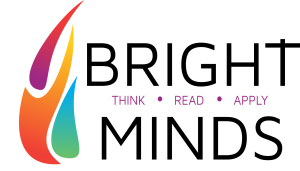“Speed learning” is a term that is often used to describe various techniques and strategies aimed at accelerating the process of learning and acquiring new skills or knowledge. The concept of speed learning focuses on optimizing the efficiency of learning, allowing individuals to acquire information and abilities more quickly than through traditional methods. Here are some key aspects and techniques associated with speed learning:
- Active Learning: Speed learning emphasizes active participation in the learning process. Instead of passive activities like reading or listening, learners engage in activities that require them to interact with the material actively. This can include discussions, problem-solving, and hands-on activities.
- Chunking: Chunking is the process of breaking down complex information into smaller, manageable chunks. By dividing content into smaller pieces, learners can more easily process and remember it. This technique is commonly used in speed reading, where text is broken into smaller groups of words to improve reading speed.
- Visualization: Visualization techniques involve creating mental images or diagrams to represent concepts or information. This can help learners grasp complex ideas more quickly and remember them better.
- Mind Mapping: Mind mapping is a visual technique that involves creating diagrams to represent relationships between ideas or concepts. It can be an effective way to organize information and make it easier to understand and remember.
- Accelerated Learning Methods: Some educational programs and courses are designed based on accelerated learning principles. These programs often incorporate strategies like gamification, interactive multimedia, and spaced repetition to speed up the learning process.
- Spaced Repetition: Spaced repetition involves reviewing and practicing information at increasing intervals over time. This technique leverages the psychological spacing effect, which suggests that spacing out learning sessions can improve long-term retention.
- Memory Techniques: Speed learners often use memory techniques like mnemonic devices, acronyms, and memory palaces to enhance their memory and recall abilities. These techniques make it easier to remember large amounts of information quickly.
- Speed Reading: Speed reading techniques aim to increase reading speed while maintaining comprehension. Methods include eliminating subvocalization (silent reading to oneself), using a pointer or guide, and reducing regression (going back to re-read).
- Focused Learning: Speed learning advocates emphasize the importance of eliminating distractions and maintaining high levels of concentration during learning sessions. This can significantly improve the efficiency of learning.
- Goal Setting: Setting clear and specific learning goals helps learners stay motivated and focused on what they need to achieve. Speed learners often use SMART (Specific, Measurable, Achievable, Relevant, Time-bound) goals to guide their learning.
It’s important to note that the effectiveness of speed learning techniques can vary from person to person, and not all methods may work equally well for everyone. Additionally, the quality of learning and comprehension should not be sacrificed in the pursuit of speed. The ultimate goal of speed learning is to enhance the efficiency of the learning process while ensuring that the knowledge and skills acquired are meaningful and retained for the long term.

